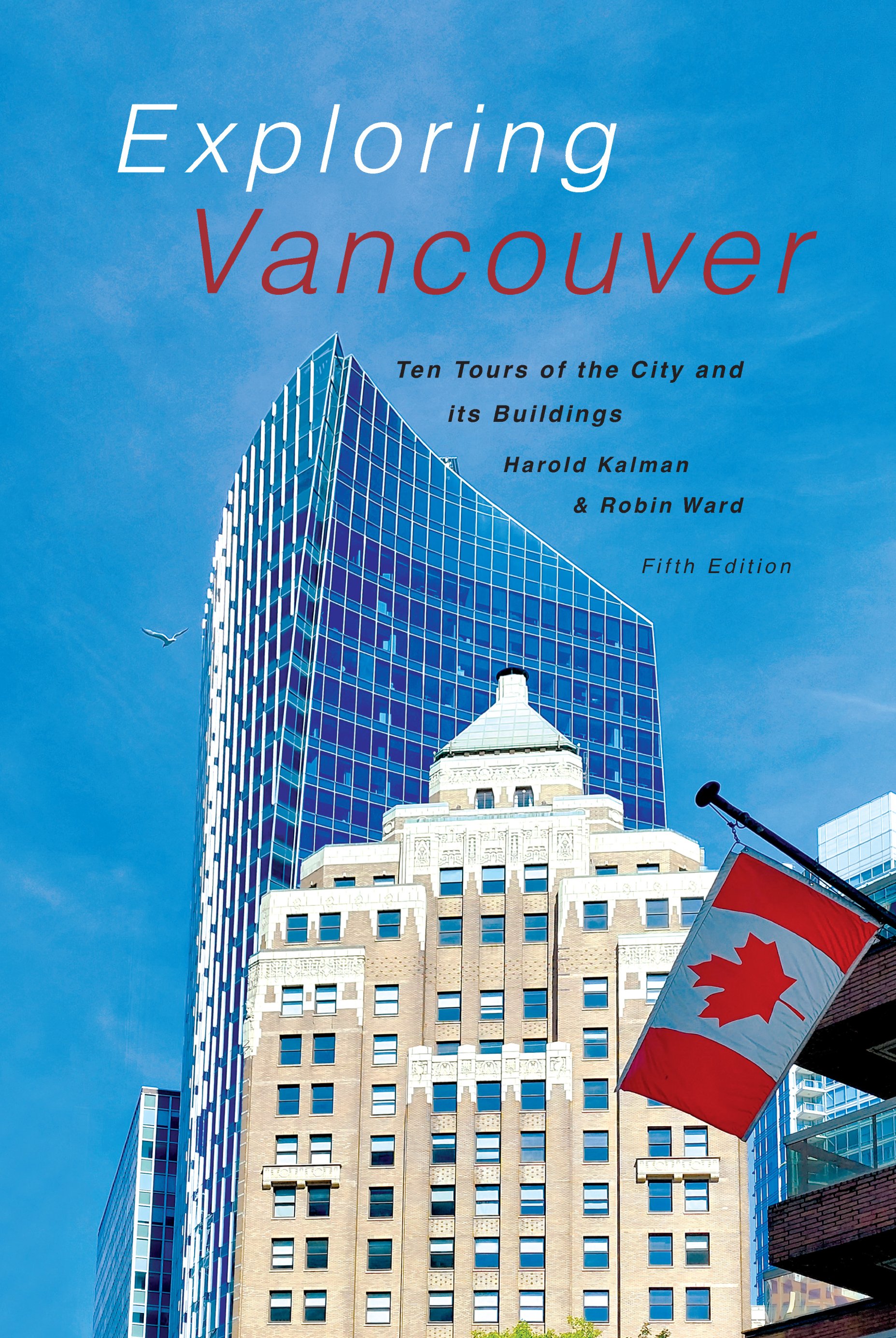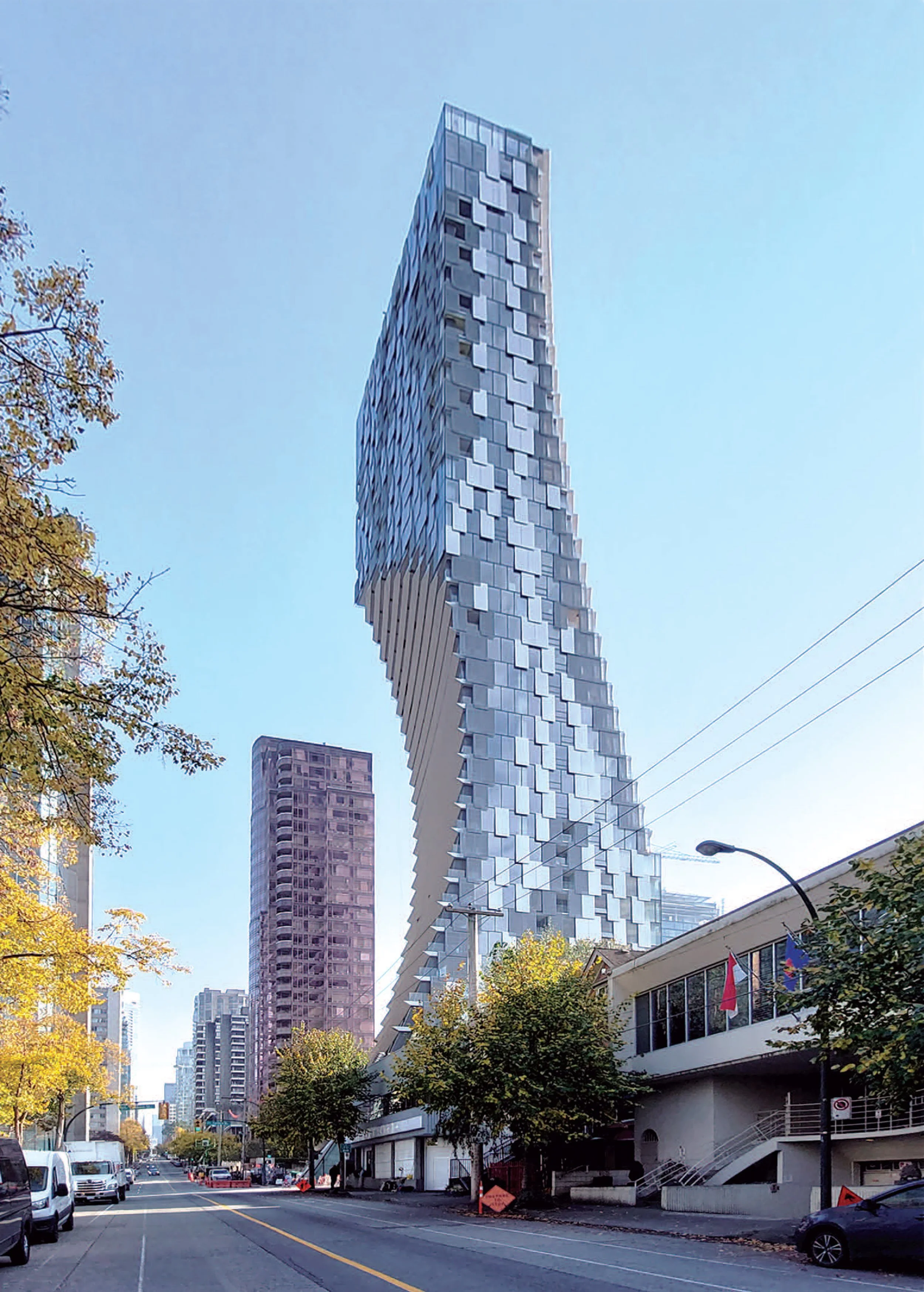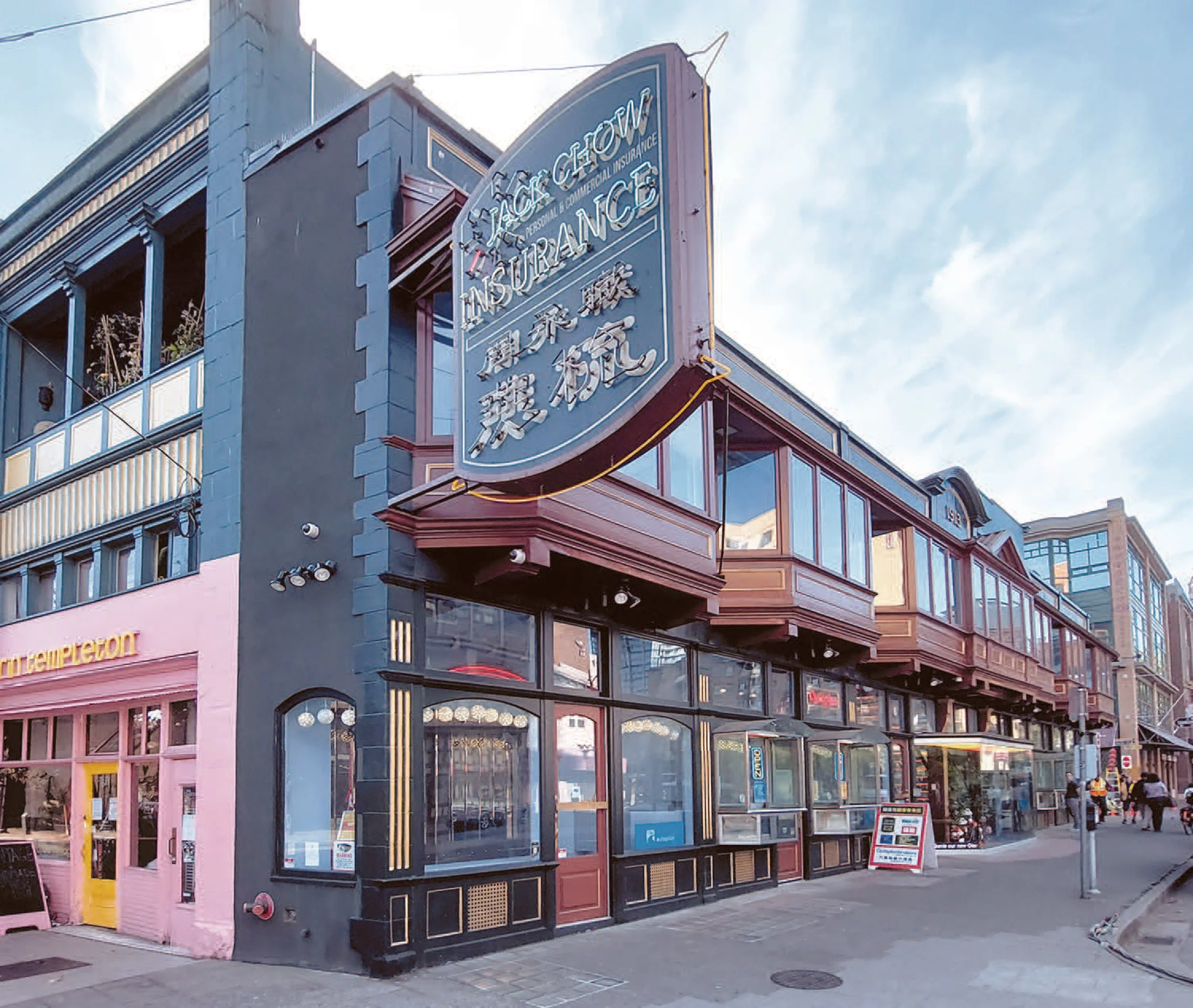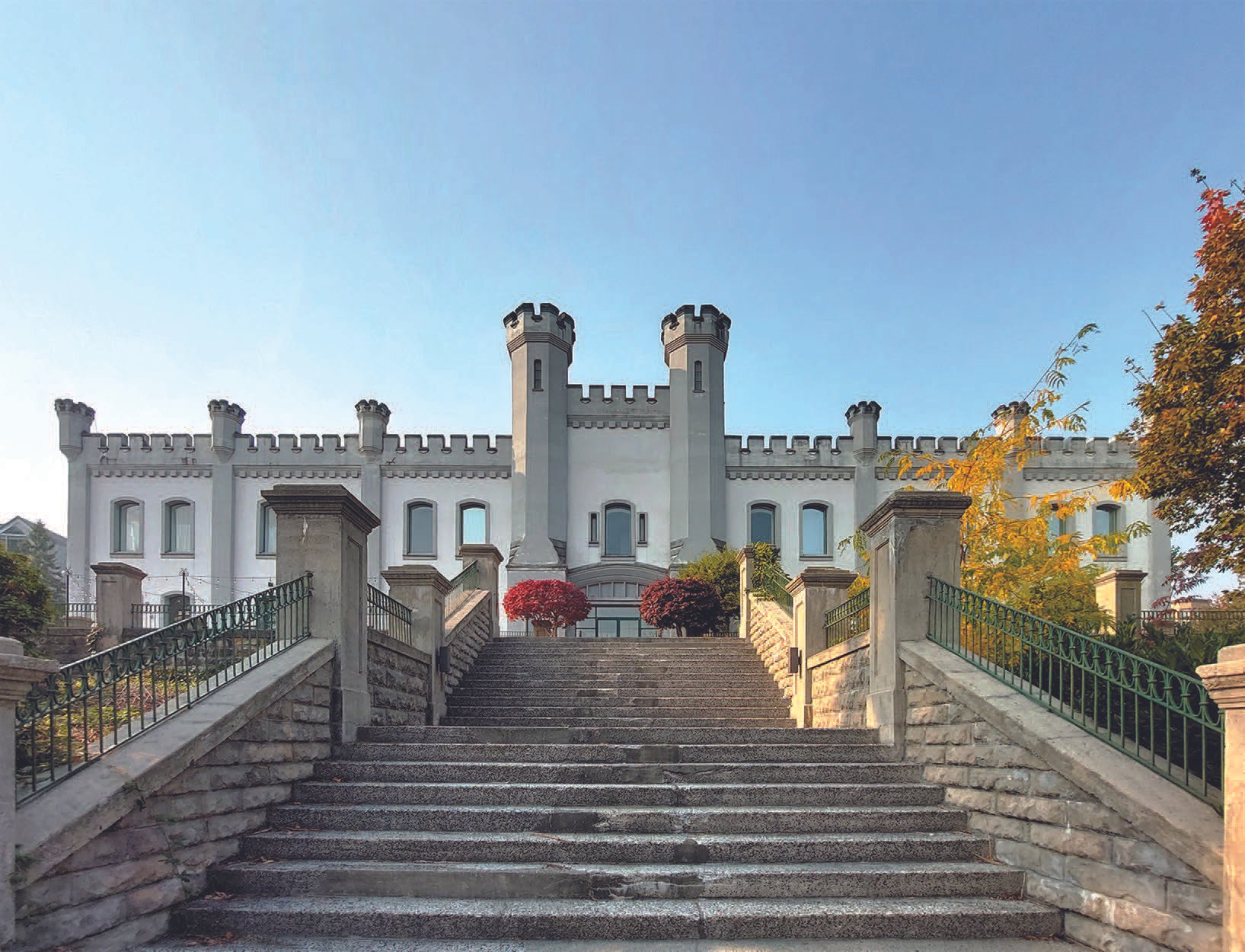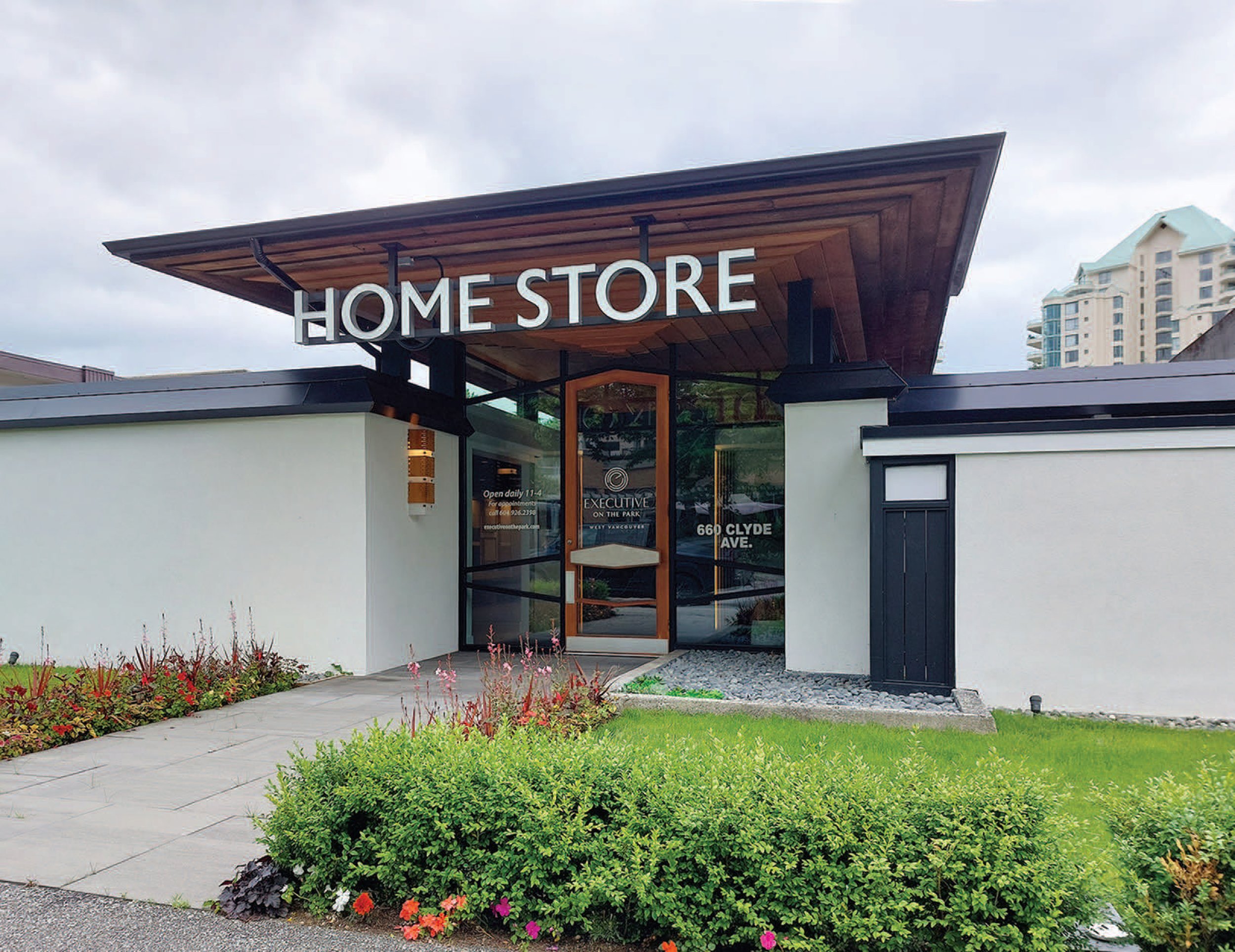Exploring Vancouver: Ten Tours of the City and Its Buildings offers fantastically detailed look at the urban landscape
Local experts Harold Kalman and Robin Ward release fifth edition of the must-have guidebook
VANCOUVER’S ARCHITECTURE IS as diverse and dynamic as the city itself. A newly revised guidebook by two local experts shares captivating, meticulous details about the structures and spaces that have shaped Vancouver’s skyline, character, and global status.
Exploring Vancouver: Ten Tours of the City and its Buildings (Fifth Edition) (Harbour Publishing), by Harold Kalman and Robin Ward, picks up where the fourth edition, from 2012, left off. Ward (Robin Ward’s Vancouver and Robin Ward’s Heritage West Coast) is an architectural critic, graphic artist, and former architecture columnist for the Vancouver Sun. He has also written architectural guides to Edinburgh, Glasgow, and Bangkok. Kalman (Exploring Ottawa and A History of Canadian Architecture) is a Victoria-based heritage specialist and architectural historian who formerly taught at the University of British Columbia. A member of the Order of Canada, he holds appointments at the University of Victoria and University of Hong Kong.
Each neighbourhood comes with a comprehensive overview, as does every single one of the 400-plus featured and photographed buildings—homes, hotels, banks, theatres, churches, cathedrals, live/work studios, corner stores, museums, breweries, arts organizations (including Arts Umbrella, The Chan Centre for the Performing Arts, Parker Street Studios, and Western Front Society Building), markets, apartments, offices, community centres, fire halls—as well as memorials, monuments, parks, bridges, public art (such as Douglas Coupland’s The Golden Tree) and Indigenous art (including the Musqueam Welcome Post by Brent Sparrow Jr. on University Boulevard and the Survivor’s Totem Pole, crafted from an ancient red cedar sourced in Haida Gwaii and created by Skundaal Bernie Williams, Bill Reid’s only female apprentice; it is in Pioneer Place, commonly known as Pigeon Park). Stanley Park’s Hollow Tree gets an entry; so does Finn Slough, a Richmond Heritage Site, with its cabins on stilts, some said to date back to the 1890s, with the arrival of Finnish settlers for fishing.
Alberni. 1550 Alberni Street. Kengo Kuma & Associates, Merrick Architecture 2022. Photo by Robin Ward courtesy Exploring Vancouver: Ten Tours of the City and Its Buildings
Each tour is designed to be experienced by walking, biking, driving, or taking transit. All of the entries are numbered and keyed to maps for easy navigation.
Why now for the new release?
“We realized that the 4th edition of Exploring Vancouver, published in 2012, had been overtaken by the rapidly changing city,” Ward shares with Stir. “Our publisher, Howard White of Harbour Publishing, agreed. This fifth edition looks at how the city has evolved in the past decade, where it is now and where it may be going.”
Notably, the book examines the long-overlooked role that Musqueam, Squamish, and Tsleil-Waututh Nations play in the ever-evolving story, the region situated on their unceded, ancestral, and traditional territories. The book covers everything from the šxʷqʷeləwən ct (One Heart, One Mind) Carving Centre at Britannia Community Services Centre (Joe Wai, 2017) to the forthcoming Sen̓áḵw development at the South end of Burrard Bridge by Squamish Nation and its development arm, Nch’kay (Revery Architecture, design; Kasian Architecture, executive architect) with Westbank to the ambitious proposed projects for decolonized Jericho Lands and Heather Lands.
There have been major shifts in the city skyline since the first edition (1974, published by University of British Columbia) and the fifth.
“In the 1970s, almost all high-rise buildings were downtown,” Ward says. “Development of the Expo Lands and Coal Harbour changed everything. The boosters who thought Expo would stimulate global interest, investment, and development—and make Vancouver ‘world class’—were right, but it’s not how they expected it would be.”
Kalman adds: “This has become a different city over the past half-century.”
Also of note are architectural changes related to the climate crisis and other pressing societal issues.
“The city has world-class problems and challenges—social inequality, lack of affordability, and climate anxiety, “ Ward says. “Exploring Vancouver looks at responses to these issues and the new architecture that is emerging to deal with them: ‘missing middle’ housing, densification, and engineered timber technology as an eco-friendly structural alternative to steel and concrete, now that building codes allow it for high-rise construction.”
There were some things that stood out for the authors throughout the writing process, such as “the overall high quality of so much of what is new”, Kalman says. “Vancouver’s architects evidently recognize that the world is watching what they do, so they do it more thoughtfully than in the past.”
Exhaustively researched, the new edition features chapters on Metro Vancouver (New Westminster, Richmond, Surrey, Fort Langley, Maillardville, Burnaby and Port Moody); the University of British Columbia; Gastown, Victory Square and Chinatown; Strathcona and East Vancouver; Downtown; Coal Harbour, the West End and Stanley Park; The North Shore (including Bowen Island); Fairview, Mountain Pleasant and South Vancouver; Shaughnessy Heights and the West Side. The book opens with The Expo Lands, False Creek and Granville Island, from Concord Pacific Place to B.C. Place Stadium.
Survivor’s Totem Pole. Photo by Robin Ward courtesy Exploring Vancouver: Ten Tours of the City and Its Buildings.
Some neon signs get the spotlight: consider those on Chin Wing Chun Society at 160 East Pender Street (Robert A. M. McKenzie, 1925). Sai Woo Chop Suey operated there from 1925 to 1959. Its neon sign was re-created for the new Sai Woo, while another one for Ho-Ho Chop Suey has been re-created (heritage consultant John Atkin) for placement at the Sun Ah Hotel, 102 East Pender Street, according to Exploring Vancouver.
Sam Kee Building at 8 West Pender Street (Bryan & Gillam, 1913). Photo by Robin Ward courtesy Exploring Vancouver: Ten Tours of the City and Its Buildings
The “world’s narrowest building”, Sam Kee Building at 8 West Pender Street (Bryan & Gillam, 1913) is profiled. The description is credited to merchant Chang Toy, who savvily stayed in business (which went by his Anglicized name) after the City widened the street by taking away 24 feet of the 30-foot wide lot. “Steel-frame construction was chosen to best exploit the tight site,” the authors write, adding that bay windows helped maximize space on the upper floors, while the basement “areaway” illuminated by glass sidewalk blocks also gave extra room. “In 1966, architects Birmingham & Wood bought the then dilapidated building and restored it ‘close to original condition’. Subsequent rehabilitation (Soren Rasmussen 1986) was commissioned by a new owner, Jack Chow. The business he founded in 1962, Jack Chow Insurance, is still in the family.”
2400 Court. Photo by Robin Ward courtesy Exploring Vancouver: Ten Tours of the City and Its Buildings
2400 Court is a natural inclusion: The 1947 “motor court” at 2400 Kingsway is what the authors call a perfect period piece: “with its vintage neon sign, two-storey office, and hipped-roof stucco cottages on manicured lawns,” they write. “In 2016, the City-owned property was one of nine temporary housing sites in Metro Vancouver for federal government-assisted Syrian refugees.”
British Columbia Penitentiary Gatehouse Department of Public Works, 1929. Photo by Robin Ward courtesy Exploring Vancouver: Ten Tours of the City and Its Buildings
Another listing: British Columbia Penitentiary Gatehouse (Department of Public Works, 1929), at 319 Governors Court; it was a maximum-security jail built in 1874-78 and decommissioned in 1980.
Woyat-Bowie Building. Photo by Robin Ward courtesy Exploring Vancouver: Ten Tours of the City and Its Buildings
You could make a trivia game out of the book, with all of its extensive facts. It includes a rare intact example of commercial West Coast modernism with the 1966 Woyat-Bowie Building at 660 Clyde Avenue, by Fred Hollingsworth and Barry Downs, in West Vancouver. The building had its architects’ office and three medical-dental offices. The authors share that heritage consultant John Atkin described its 2021 restoration as being inspired by “the work and ideas of Frank Lloyd Wright, while the interest displayed a Japanese sensibility with each office, enclosed within the stuccoed walls, opening out onto a series of private walled courtyards”.
The authors add: “The single-storey wood-frame structure, with cedar trim, is defined by a dramatic ‘floating roof’ above a circulation corridor lit by clerestory windows.”
The Principal’s House, 602 Keefer Street. Photo courtesy Exploring Vancouver: Ten Tours of the City and Its Buildings
And what about the Principal’s House, at 602 Keefer Street? The 1902 Queen Anne-style house might have seemed spooky to kids with its witch’s-hat turret, Ward and Kalman write, a look that was somehow apt given that the first owner, Gregory Henry Tom, was the principal of Lord Strathcona School across the street and was said to be intimidating himself.
St. Paul’s Indian Catholic Church on Squamish Mission Reserve on the North Shore, Indian Residential School History and Dialogue Centre at UBC, Triangle Building on Main Street, International Buddhist Society Guan-Yin, Lim Sai Hor Kow Mock Benevolent Association, Rogers Sugar Warehouse, Vancouver Salt Company Building, and Dayton Original Factory Store are a mere handful of other places covered in fascinating, concise detail. What’s not included in the book are houses of interest that are obscured by foliage to prevent people from trespassing.
It’s impossible to pick any single structure as a favourite, of course.
“Everyone’s favourite, the Marine Building, is on the book’s cover!” Ward says. “Seriously, favourites is a hard call because so much good architecture is happening, much more than in the previous edition of the book. Back then, “Vancouverism” was the trend, but that typology is being eclipsed by shape-shifting new towers. Look at 1550 Alberni and Vancouver House by ‘world class’ starchitects Kengo Kuma and Bjarke Ingels. The Polygon Gallery at Lower Lonsdale by our own Patkau Architects is superb. And check out the nearby Shipyards, a Granville Island for the 21st century on the old Wallace shipbuilding site.”


